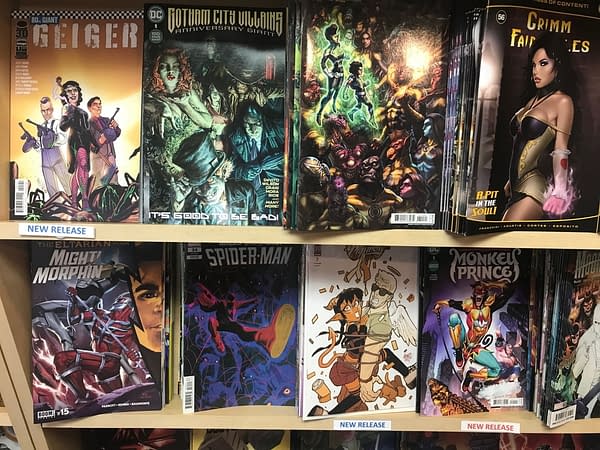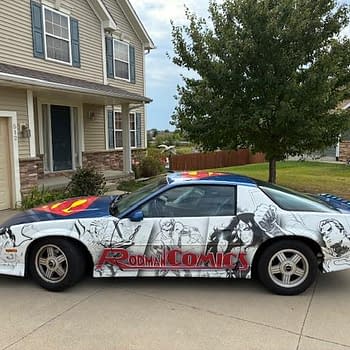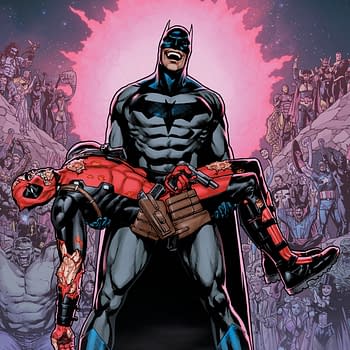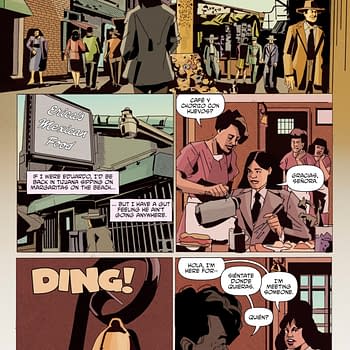Posted in: Comics | Tagged: Comics, Cover Variants
Comic Store In Your Future: Do People Actually Read Comics?
When comics first started, people bought them to read.
Another month means another order for comics—so many comics to choose from. We now order comics through Diamond Comics, Penguin, and Lunar. As I was working on the orders, I realized that I did not know the storylines in most of the comics I was ordering. Much more attention was paid to the many variants covers and who the artists are on the variant covers. When I was collecting comics in my youth, I did so to read them. The covers, of course, could look neat to me, though it was the story that would determine if I came back next month for the next issue. Of course, there would only be one cover to pick from back when I was young. For newer comic collectors, a time when there was only one cover offered per issue may be hard to fathom. I wondered, do people actually read comics in this day and age?
The publisher's focus is so heavy on variants that the storylines are often overlooked. People do buy multiple copies of the same issue if the covers are "cool" enough to them. It does up the challenge of ordering comics. Often a previous issue will not sell out at a store, and then they will have the same or fewer amounts next month arrive of the same title, and it sells out. Why? People bought multiple copies of the comic due to the various covers. Art is subjective. There is no scientific way of knowing what people will deem a cool cover that they have to have over one they pass up. There are cover artists that people follow and collect. People collecting Skottie Young covers have increased over the years for us. Various comics have one cover that sells, just because a certain artist did the cover. The only reason an issue might sell at times is due to the cover artist. We recently sold seven copies of one comic due to the cover artist and none of the other variant covers of the same book. Not ideal.
The bigger comic publishers market their books heavily on the cover art. Ten, twenty, thirty, or more covers for one book? That is a lot of covers for a single issue. Marketing or hype for the plot in the actual comic? Not so much. Interior artists on a comic are easily overshadowed by the hype for the cover art. The cover art is often much different to the interior art. For a new person just picking up their first comic, that can be quite the surprise. Jarring even.

Back issues are hot currently due to people wanting the first appearance of almost any character that people think may become used in other media or used more in comics. A lot of people are buying comic appearances with first appearances hoping to invest with their purchase and do not read the actual comic. The non-stop renumbering of titles has made collecting confusing for many. A person comes in and says that they read issue four of a previous Daredevil run and wants to get the next issue and then is totally confused when asked which run of Daredevil. The same renumbering of the same character's titles also makes people collect comics less. It was much easier to collect a run when there was only one title, and the numbering was not reused over and over again. Currently, the various comic publishers' focus is often about getting people to buy multiple copies of the same comic due to the various different covers of a comic. Short-term gain over long-term gain.
The readership here in the store has been dropping. There are plenty of comics to choose from, so many it feels overwhelming at times to current comic readers and for a new person wanting to read comics. Then there are crossovers and/or spin-offs. Comics such as Powers Of X and House Of X limited series got people reading the storylines and were very popular. People were at first trying to get all the mutant titles that were introduced. The market was swamped with mutant spin-off titles and people actually started dropping titles.
Speculating, renumbering, and variants do not get people into reading comics. Why worry about if people are reading comics? People reading comics leads to the long-term growth of the comic industry. Reading is a habit; getting people to come back either week after week or month after month for the newest comic because they want to know what happens next; they want to be entertained keeps the market stable. These same people tell others about their favorite comics they are reading, and that brings in new readers. A good story is what excites people and gets new people into comics. Better stories will lead to more sales.













